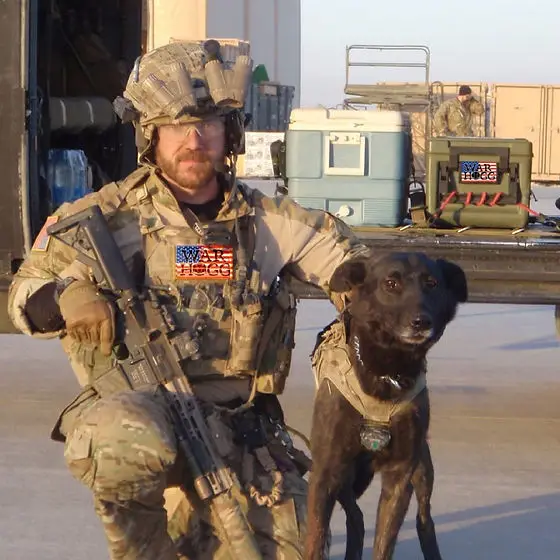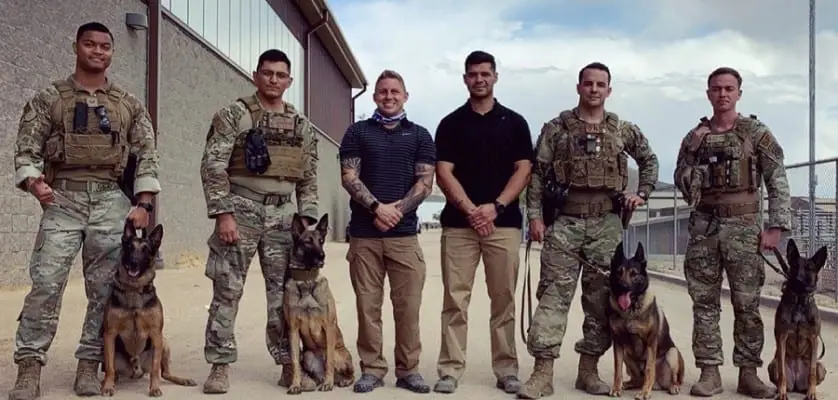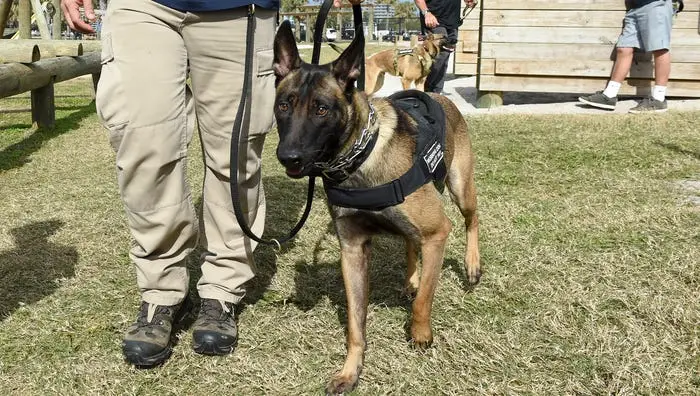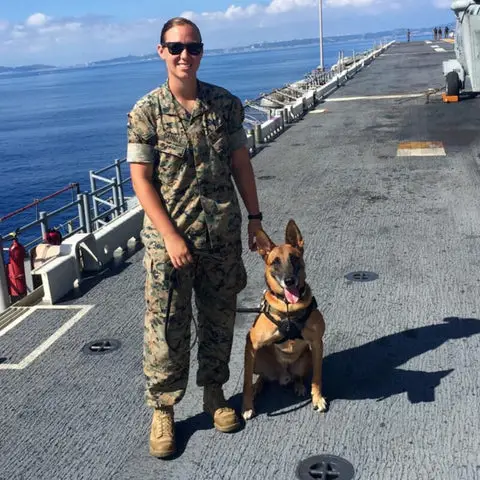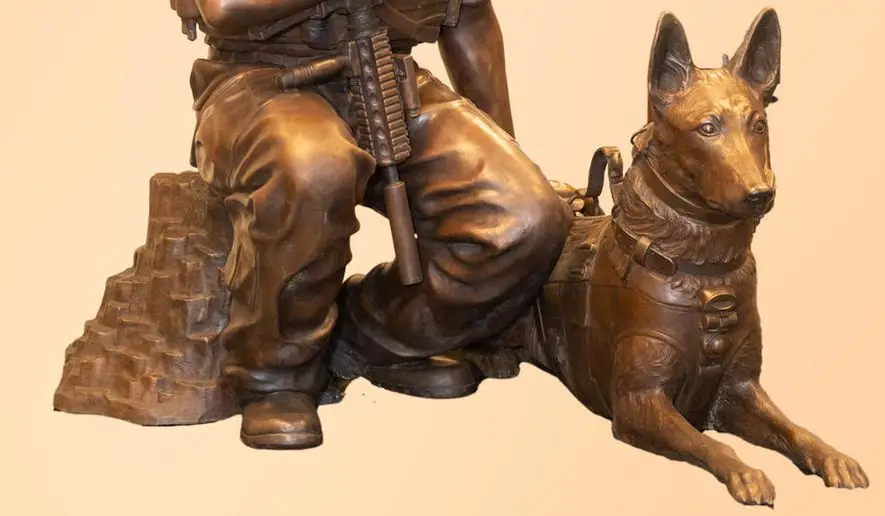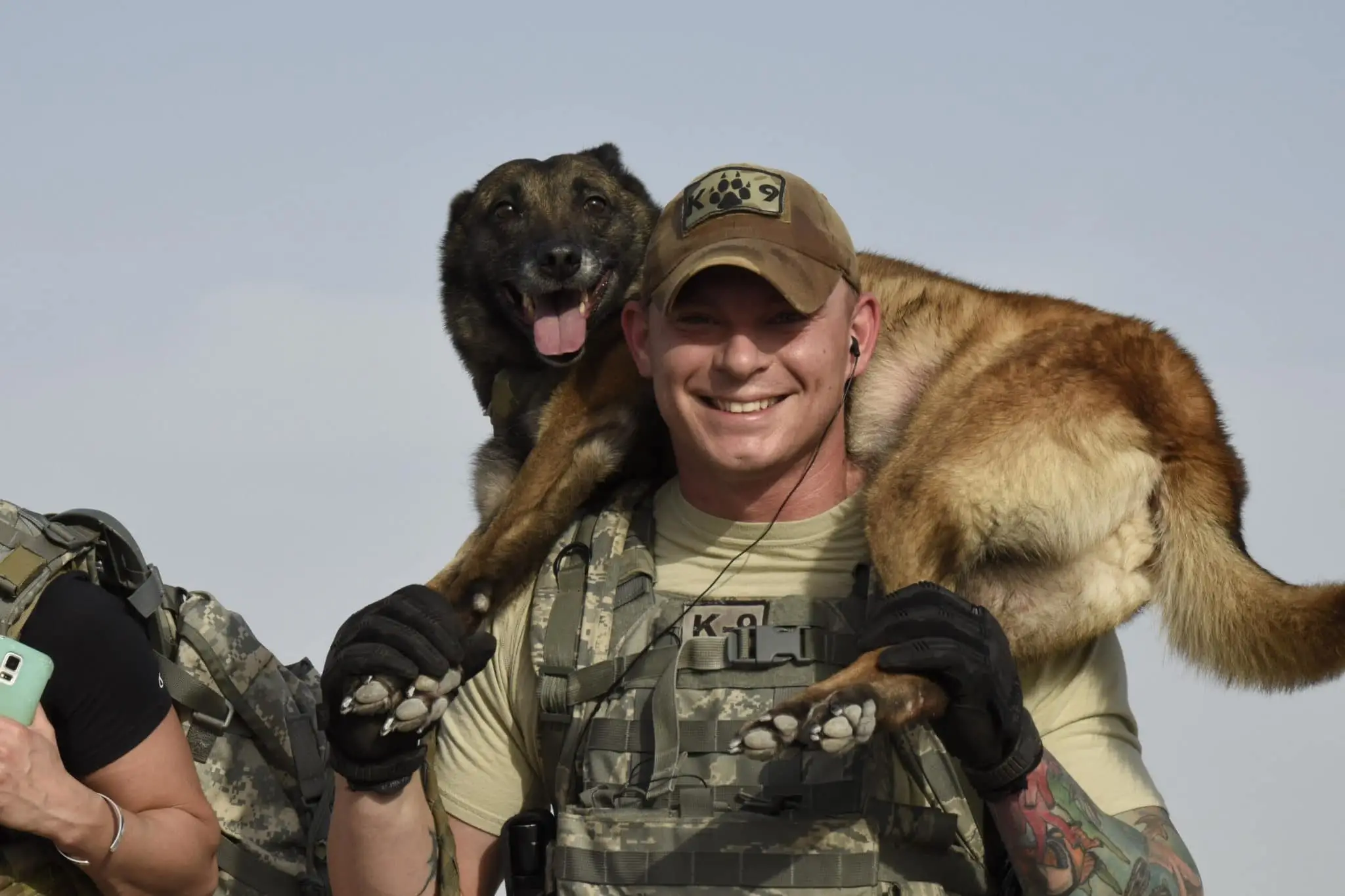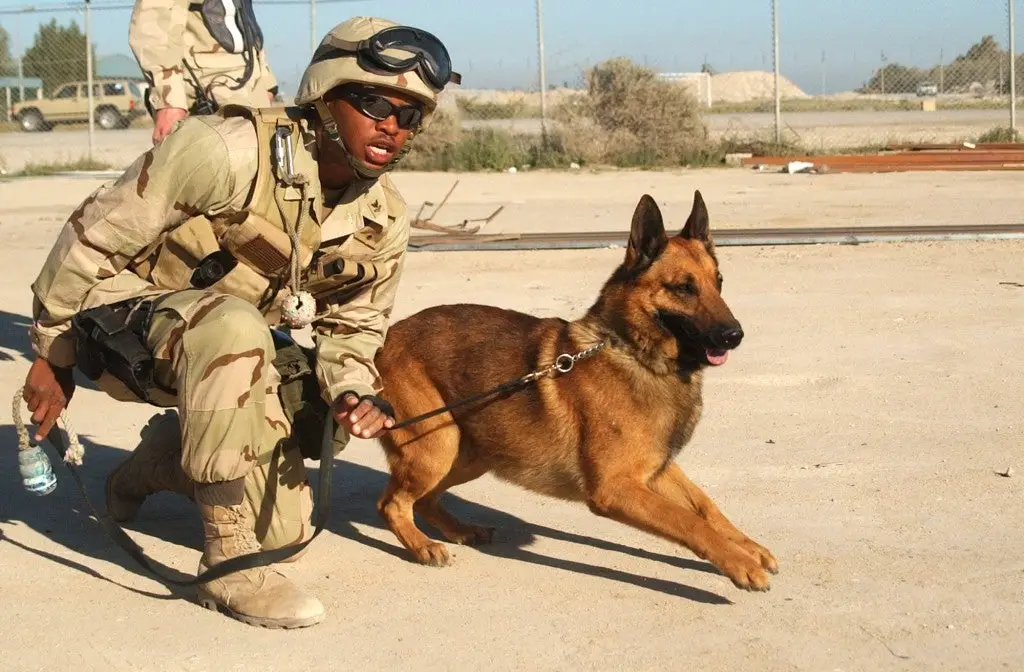Navy Seal Dog Handler An Insider Look at the Elite Force

As one of the most prestigious and demanding special operations forces in the world, the United States Navy SEALs are known for their rigorous training, intense physical conditioning, and unwavering dedication to serving their country. But what many people may not know is that these highly trained warriors often have a furry companion by their side – a specially trained military working dog.
The role of a Navy SEAL dog handler is not just about owning a highly skilled canine partner, it requires immense discipline, mental fortitude, and an unbreakable bond with their four-legged teammate. In this blog post, we will take an in-depth look at the elite force of Navy SEAL dog handlers, their training, qualifications, and the challenges they face both on and off the battlefield.
Navy Seal Dog Handler Training
Navy SEAL dog handlers undergo a specialized training program that prepares them for the unique role of handling a military working dog in combat situations. This training is conducted at the Naval Special Warfare Command in Coronado, California, and is considered to be one of the most comprehensive and physically demanding training programs in the world.
Physical Training
Just like regular Navy SEAL candidates, aspiring dog handlers must first pass a grueling physical screening test that includes push-ups, sit-ups, pull-ups, a 500-yard swim, and a timed 1.5-mile run. They must also demonstrate their ability to carry heavy loads and complete obstacle courses while being evaluated on their overall physical stamina and endurance.
Once accepted into the training program, Navy SEAL dog handlers undergo extensive physical conditioning that includes running, swimming, and weightlifting. Their physical training also involves carrying and maneuvering with their canine partners, as well as completing various outdoor exercises such as rappelling, parachute jumps, and survival training.
Canine Training
In addition to their own physical training, Navy SEAL dog handlers also undergo rigorous training with their canine partners. This involves learning advanced handling techniques, such as how to control and direct the dog’s movements using hand signals and voice commands.
They are also trained in obedience, drug detection, bomb detection, and tracking techniques. These skills are essential in detecting and preventing potential threats during combat operations. Dog handlers must also learn how to properly care for their dogs, including grooming, feeding, and administering basic medical treatment.
Qualifications for Navy Seal Dog Handlers
The qualifications for becoming a Navy SEAL dog handler are similar to those of regular SEAL candidates. Applicants must be active-duty Navy SEALs with at least two years of experience in the field. They must also possess a high level of physical fitness, intelligence, and emotional stability.
In addition, they must have a deep understanding and love for dogs, as well as the ability to work well with animals under highly stressful and dangerous conditions. Candidates are also required to have excellent communication skills and work effectively as part of a team. This is crucial as they will be working closely with their fellow SEALs and their canine partner in high-pressure situations.
The Role of a Navy Seal Dog Handler
Navy SEAL dog handlers are responsible for the overall care, training, and deployment of their military working dogs. They play an integral role in the success of SEAL missions by using their dogs’ specialized skills to gather intelligence, detect explosives and drugs, and track down enemy combatants.
In combat situations, dog handlers and their canines often operate ahead of the rest of the SEAL team, scouting for any potential threats and securing the area. They are constantly communicating with their dogs through hand signals and verbal cues, ensuring that their canine partner stays focused and follows their commands.
Aside from their combat duties, Navy SEAL dog handlers also have additional responsibilities such as maintaining their canine’s health and well-being, teaching new handlers how to work with their dogs, and providing support to other SEAL teams as needed.
Navy Seal Dog Handlers in Combat Situations
The role of a Navy SEAL dog handler is not only physically demanding but also mentally and emotionally challenging. In combat situations, they must be able to rely on their training and their bond with their canine partner to carry out their mission successfully.
One of the greatest assets of a military working dog is their heightened senses, especially their exceptional sense of smell. This allows them to detect explosives and drugs that may otherwise go unnoticed by human operatives. This capability has saved countless lives on the battlefield and has made Navy SEAL dog handlers an invaluable asset to their team.
Moreover, dogs are also trained to work in various terrains, including water operations, which makes them highly versatile in any combat situation. They can swim long distances, detect hidden underwater threats, and even parachute jump alongside their handlers.
In addition to their tactical abilities, the presence of a dog on the battlefield also has a psychological impact on both allies and enemies. The sight of a well-trained attack dog is often enough to intimidate or subdue an enemy combatant, providing a significant advantage to the SEAL team.
The Bond between Navy Seal Dog Handlers and their Canine Partners
One of the essential aspects of being a Navy SEAL dog handler is the strong bond that is formed between the handler and their canine partner. This bond is crucial for the success of their missions, as it allows for trust, communication, and teamwork between the two.
Navy SEAL dog handlers spend a significant amount of time training and working with their dogs, creating a deep and unbreakable connection. They often refer to their canine partners as their “battle buddies” and treat them as equals in every aspect.
The bond between a Navy SEAL dog handler and their canine partner goes beyond the battlefield. These dogs live and train with their handlers 24/7, forming a strong family-like relationship. Many handlers have expressed that their canine partners have become more than just working dogs; they are their closest and most trusted companions.
Challenges Faced by Navy Seal Dog Handlers
Being a Navy SEAL dog handler is not without its challenges. The physical and mental demands of the job, combined with the constant danger and stress of combat situations, can take a toll on even the toughest individuals. In addition to these challenges, there are also specific issues that are unique to the role of a military working dog handler.
One of the main challenges faced by Navy SEAL dog handlers is the constant fear of losing their canine partner. These dogs are trained to be fearless and put their lives on the line for their handlers, making them susceptible to injuries or even death in the line of duty. The loss of a canine partner is not only emotionally devastating but can also affect the handler’s ability to continue their duties.
Another challenge faced by Navy SEAL dog handlers is maintaining their canine’s health and well-being in harsh, unpredictable environments. Military working dogs must be able to withstand extreme temperatures, rough terrain, and other potential hazards. It is the handler’s responsibility to make sure their dog is physically and mentally prepared for any situation.
Career Opportunities for Navy Seal Dog Handlers
Once they have completed their training and served as a Navy SEAL dog handler, individuals can go on to pursue various career opportunities both within and outside the military. Some may choose to continue their careers as dog handlers, while others may use their skills and experience to transition into fields such as law enforcement, K-9 units, or private security.
In recent years, there has been a growing demand for highly trained and specialized military working dogs, creating a shortage of qualified handlers. This has led to lucrative job opportunities in the private sector for retired Navy SEAL dog handlers as consultants, trainers, and handlers for private security firms.
Life as a Navy Seal Dog Handler: Expectations vs. Reality
The portrayal of Navy SEAL dog handlers in movies and TV shows often romanticizes the job, depicting it as a heroic and adrenaline-fueled role. While there are undoubtedly moments of intense action and bravery, the reality of being a Navy SEAL dog handler is much more complex and physically demanding.
The physical training alone requires an incredible amount of dedication and perseverance, and the mental demands of combat situations can be overwhelming. Day-to-day duties also involve routine tasks such as grooming, feeding, and training their canine partner, which can take up a significant amount of time and effort.
Moreover, being a Navy SEAL dog handler means constantly putting one’s own life on the line for the sake of their team and their country. The psychological impact of this responsibility can be immense, leading to high levels of stress, anxiety, and post-traumatic stress disorder (PTSD).
How to Become a Navy Seal Dog Handler
Becoming a Navy SEAL dog handler is not an easy or straightforward process. It requires years of hard work, dedication, and physical and mental strength. Here are the steps to becoming a Navy SEAL dog handler:
- Meet the basic qualifications: Applicants must be active-duty Navy SEALs with at least two years of experience, have a high school diploma or equivalent, pass the physical screening test, and meet other eligibility requirements.
- Attend Basic Underwater Demolition/SEAL (BUD/S) training: All Navy SEAL candidates must attend the BUD/S training program, which is considered one of the toughest military training programs in the world.
- Complete Special Operations Combat Medic (SOCOM) training: Upon completion of BUD/S, candidates must undergo SOCOM training, which involves extensive medical and trauma training.
- Serve in a Navy SEAL team: After completing SOCOM training, candidates will serve in a Navy SEAL team for at least two years before being eligible to apply for SEAL dog handler training.
- Apply for SEAL dog handler training: Once eligible, candidates can apply for the Navy SEAL dog handler training program at the Naval Special Warfare Command.
- Complete dog handler training: The training program includes both physical and canine training, as well as classroom instruction on handling techniques, care for military working dogs, and combat tactics.
- Serve as a Navy SEAL dog handler: After completing the training program, candidates will serve as a Navy SEAL dog handler for a designated period before being able to transition to other career opportunities within or outside the military.
Famous Navy Seal Dog Handlers Throughout History
Throughout history, there have been many legendary Navy SEALs who have served as dog handlers. These individuals have demonstrated great bravery, heroism, and an unwavering dedication to their country and their canine partners. Here are some of the most famous Navy SEAL dog handlers:
- Will Chesney: Chesney is a retired Navy SEAL who served as a dog handler during Operation Neptune Spear, the mission that resulted in the death of Osama bin Laden. Chesney and his canine partner, Cairo, were responsible for securing the perimeter of the compound during the operation.
- Mike Ritland: Ritland is a former Navy SEAL and dog trainer who has trained hundreds of military working dogs for various branches of the military. He is also the author of “Trident K9 Warriors,” a book that details his experiences as a SEAL and a dog handler.
- Keaton Southerland: Southerland is a former Navy SEAL who served as a dog handler during Operation Iraqi Freedom. He and his canine partner, “Cairo,” were involved in over 100 combat missions and were instrumental in locating enemy weapons caches and explosives.
- Michael Monsoor: Monsoor was a Navy SEAL who was posthumously awarded the Medal of Honor for his heroic actions during Operation Iraqi Freedom. He served as a dog handler and was killed while protecting his teammates from a grenade blast.
Video
Conclusion
Navy SEAL dog handlers are an integral part of the elite special operations force and play a crucial role in protecting their country and their fellow SEALs. Their training, qualifications, and dedication to their canine partners make them highly skilled and respected members of the military.
The bond they share with their canine companions is unbreakable, and their bravery and heroism in combat situations have saved countless lives on the battlefield. The role of a Navy SEAL dog handler is not for the faint of heart, but for those who have what it takes, it can be one of the most rewarding and impactful careers in the world.

